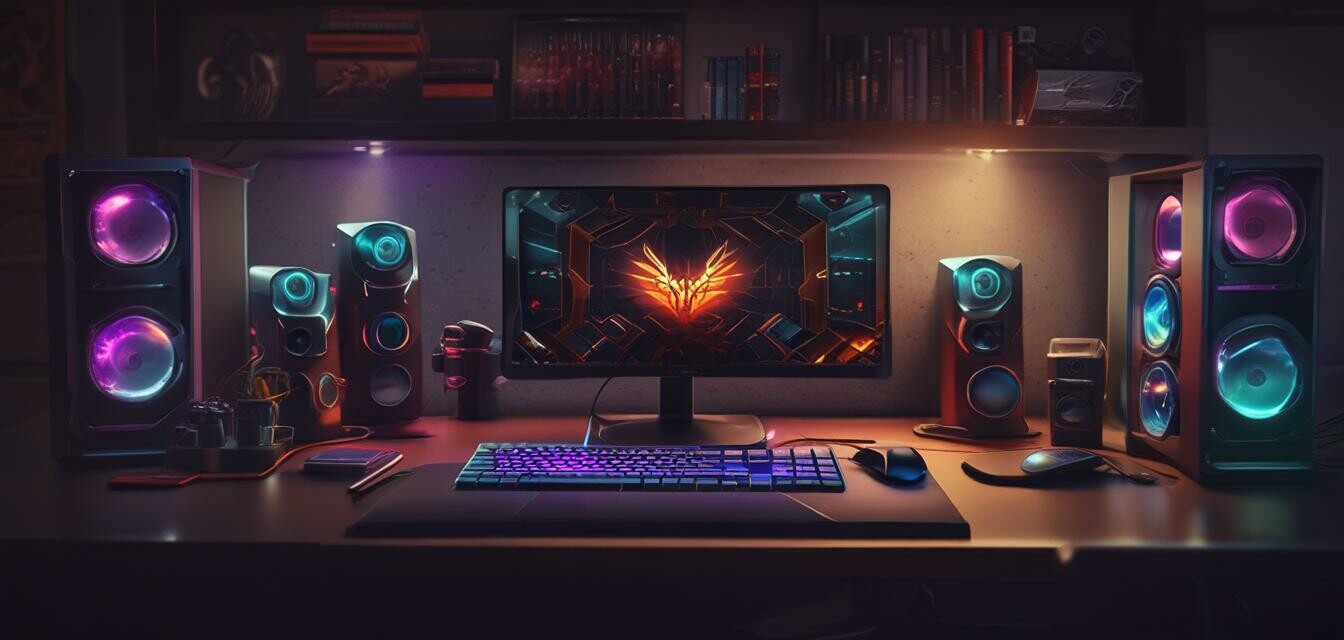
A Beginner's Guide to Building Your First Gaming PC
Key Takeaways
- Understand the essential components of a gaming PC and their function.
- Choose the right graphics card for enhanced gaming performance.
- Follow step-by-step instructions for assembling your gaming PC.
- Consider cooling and power supply options to ensure system stability.
- Learn about potential upgrades and future-proofing your gaming rig.
Building your own gaming PC can be an exciting and rewarding journey. By assembling your own rig, you can tailor the system to cater to your gaming requirements. This guide will walk you through the essential components, tips, and tricks you'll need to successfully build your first gaming PC.
Essential Components for Your Gaming PC
| Component | Description |
|---|---|
| Processor (CPU) | The brain of the operation. Choose a CPU that fits your gaming needs. |
| Graphics Card (GPU) | Essential for rendering graphics. We'll recommend the GALAX GeForce RTX™ 4070 Ti for performance. |
| Motherboard | Make sure it's compatible with your CPU and has enough ports for upgrades. |
| RAM | Choose at least 16GB for smooth multitasking and gaming. |
| Storage (SSD/HDD) | SSD is recommended for faster load times; consider a mix for capacity. |
| Power Supply Unit (PSU) | Ensure it has enough wattage for your components and is reliable. |
| Case | Choose one with good airflow and enough space for your components. |
| Cooling System | Good cooling prevents overheating. Consider air or liquid cooling. |
Building Your Gaming PC: Step-by-Step Instructions
Step 1: Gather Your Tools
You will need the following tools:
- Phillips screwdriver
- Anti-static strap (optional but recommended)
- Cable ties for organization
- A clean, spacious workspace
Step 2: Prepare the Case
- Open the case and remove any packaging materials.
- Install the standoffs for the motherboard.
- Ensure proper cable management openings are clear.
Step 3: Installation of Components
Follow these steps for installing your components:
- Install the CPU: Align and place it in the motherboard socket.
- Attach the CPU Cooler: Secure it onto the CPU.
- Install RAM: Insert RAM sticks into the motherboard slots.
- Install the Motherboard: Attach the motherboard into the case using screws.
- Install the GPU: Place the GALAX GeForce RTX™ 4070 Ti into the PCIe slot and secure it.
- Install Storage: Mount SSDs/HDDs in designated areas.
- Install the PSU: Place it at the bottom or top of the case as per design.
Step 4: Connecting Components
Organize cables to ensure seamless airflow:
- Connect power cables to the motherboard, CPU, and GPU.
- Connect data cables from SSDs/HDDs to the motherboard.
- Ensure all fan cables are connected for optimal cooling.
Step 5: First Boot
Once everything is connected, it’s time to power on:
- Check if all fans are spinning and lights are on.
- Enter BIOS to make sure everything is recognized (CPU, RAM, etc.).
- Install your preferred operating system.
Cooling and Upgrades
Consider implementing additional cooling solutions if necessary, especially if you plan on overclocking your components. Popular options include:
- Aftermarket CPU coolers for better thermal performance.
- Additional case fans or liquid cooling systems.
Conclusion
Building your first gaming PC may seem challenging, but with the right guidance and preparation, you'll create a powerful machine that's custom-built for your gaming experience. Start with choosing components based on your needs, and don't hesitate to reference this guide or our other resources on gaming accessories and gaming desktops. Happy building!
Pros
- Customizable performance
- Potential for upgrades
- Cost-effective compared to pre-built systems
Cons
- Time-consuming assembly process
- Requires some technical knowledge
- Potential for compatibility issues
